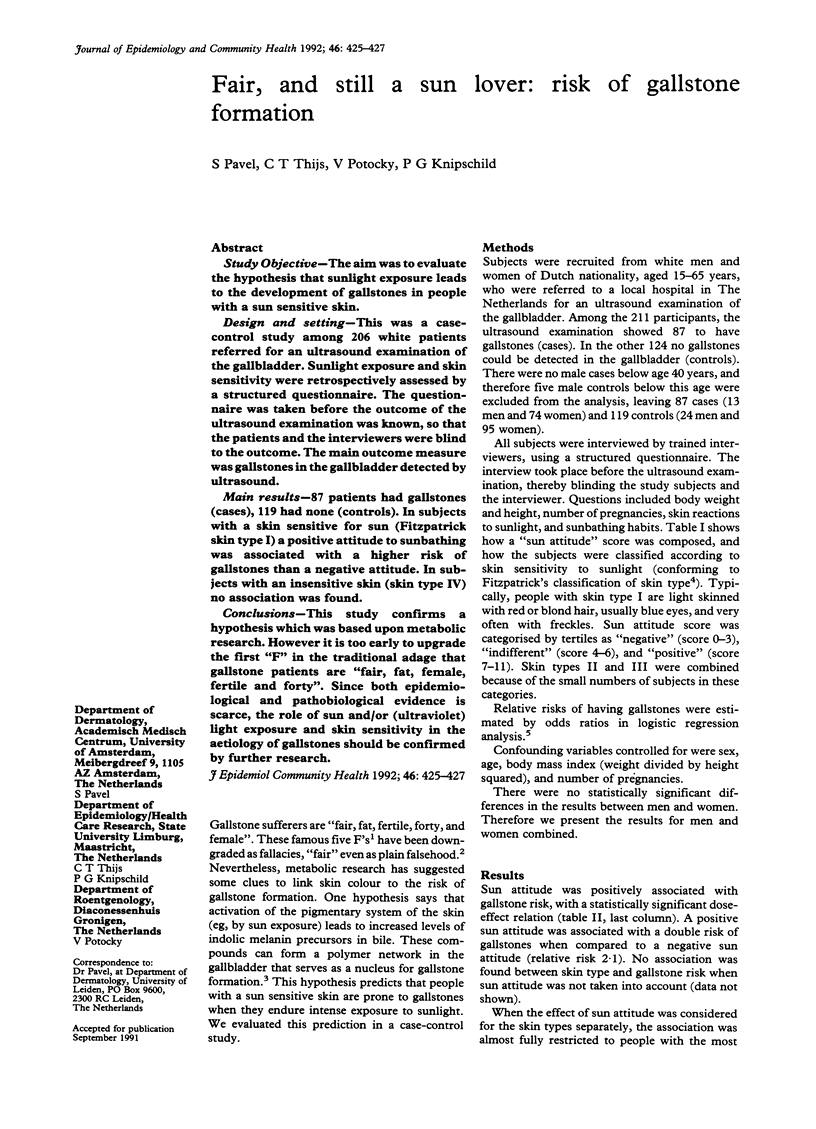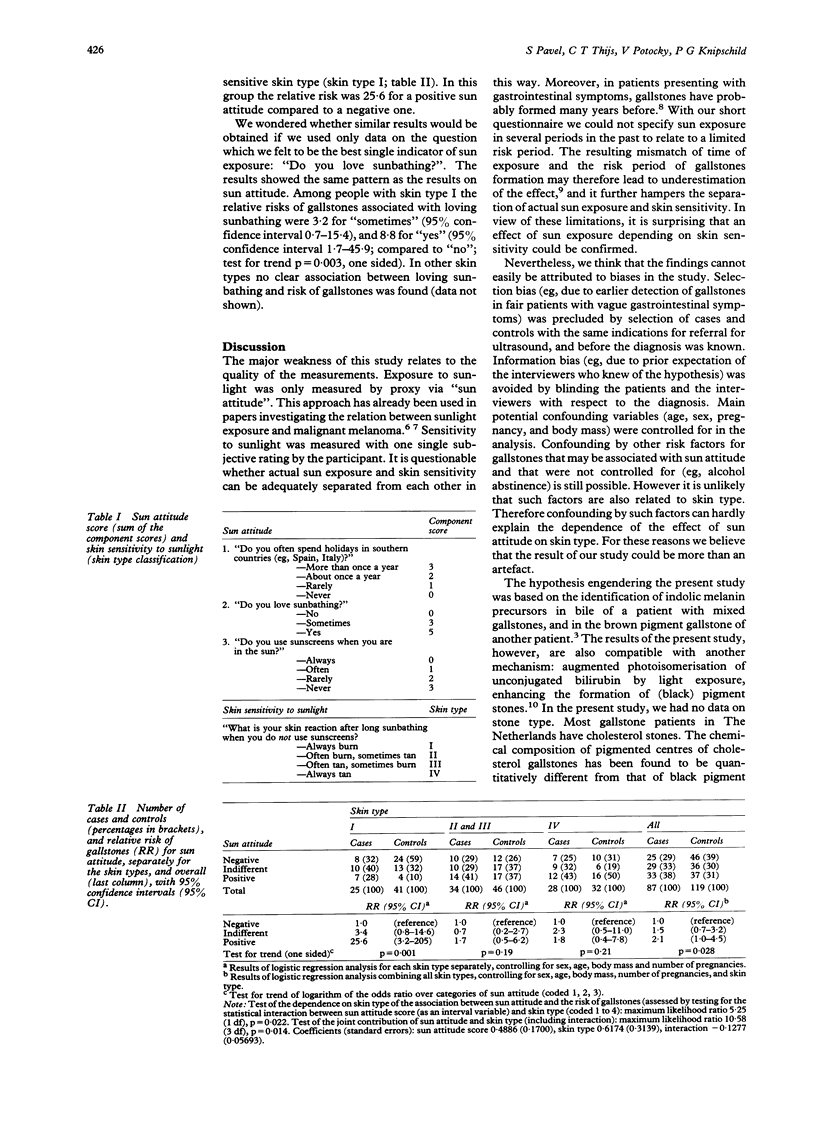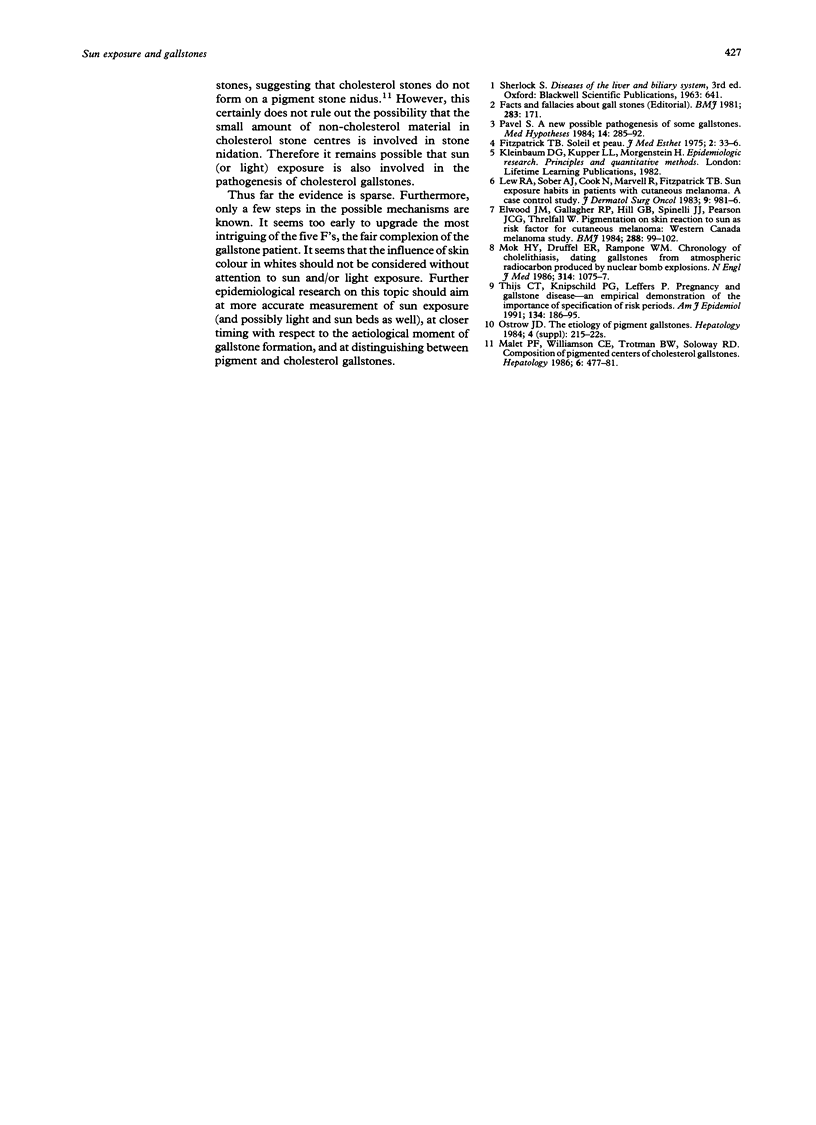Abstract
STUDY OBJECTIVE--The aim was to evaluate the hypothesis that sunlight exposure leads to the development of gallstones in people with a sun sensitive skin. DESIGN AND SETTING--This was a case-control study among 206 white patients referred for an ultrasound examination of the gallbladder. Sunlight exposure and skin sensitivity were retrospectively assessed by a structured questionnaire. The questionnaire was taken before the outcome of the ultrasound examination was known, so that the patients and the interviewers were blind to the outcome. The main outcome measure was gallstones in the gallbladder detected by ultrasound. MAIN RESULTS--87 patients had gallstones (cases), 119 had none (controls). In subjects with a skin sensitive for sun (Fitzpatrick skin type I) a positive attitude to sunbathing was associated with a higher risk of gallstones than a negative attitude. In subjects with an insensitive skin (skin type IV) no association was found. CONCLUSIONS--This study confirms a hypothesis which was based upon metabolic research. However it is too early to upgrade the first "F" in the traditional adage that gallstone patients are "fair, fat, female, fertile and forty". Since both epidemiological and pathobiological evidence is scarce, the role of sun and/or (ultraviolet) light exposure and skin sensitivity in the aetiology of gallstones should be confirmed by further research.
Full text
PDF


Selected References
These references are in PubMed. This may not be the complete list of references from this article.
- Elwood J. M., Gallagher R. P., Hill G. B., Spinelli J. J., Pearson J. C., Threlfall W. Pigmentation and skin reaction to sun as risk factors for cutaneous melanoma: Western Canada Melanoma Study. Br Med J (Clin Res Ed) 1984 Jan 14;288(6411):99–102. doi: 10.1136/bmj.288.6411.99. [DOI] [PMC free article] [PubMed] [Google Scholar]
- Lew R. A., Sober A. J., Cook N., Marvell R., Fitzpatrick T. B. Sun exposure habits in patients with cutaneous melanoma: a case control study. J Dermatol Surg Oncol. 1983 Dec;9(12):981–986. doi: 10.1111/j.1524-4725.1983.tb01051.x. [DOI] [PubMed] [Google Scholar]
- Malet P. F., Williamson C. E., Trotman B. W., Soloway R. D. Composition of pigmented centers of cholesterol gallstones. Hepatology. 1986 May-Jun;6(3):477–481. doi: 10.1002/hep.1840060326. [DOI] [PubMed] [Google Scholar]
- Mok H. Y., Druffel E. R., Rampone W. M. Chronology of cholelithiasis. Dating gallstones from atmospheric radiocarbon produced by nuclear bomb explosions. N Engl J Med. 1986 Apr 24;314(17):1075–1077. doi: 10.1056/NEJM198604243141703. [DOI] [PubMed] [Google Scholar]
- Pavel S. A new possible pathogenesis of some gallstones. Med Hypotheses. 1984 Jul;14(3):285–292. doi: 10.1016/0306-9877(87)90130-7. [DOI] [PubMed] [Google Scholar]
- Thijs C., Knipschild P., Leffers P. Pregnancy and gallstone disease: an empiric demonstration of the importance of specification of risk periods. Am J Epidemiol. 1991 Jul 15;134(2):186–195. doi: 10.1093/oxfordjournals.aje.a116071. [DOI] [PubMed] [Google Scholar]


